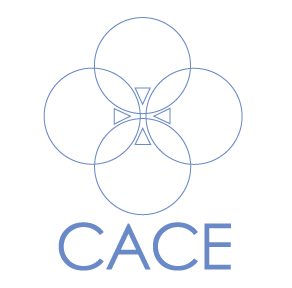 Artificial Intelligence, Copyright Law, and the Conundrum of Personhood
Artificial Intelligence, Copyright Law, and the Conundrum of Personhood
Stephen N. Bretsen, J.D. William Volkman Associate Professor of Business and Law
The timing of the CACE faculty seminar on artificial intelligence and the liberal arts in May 2023 was perfect. GPT-4, an AI platform with content-generating capabilities that far exceeded the prior version, had been released in March 2023, and an article by a student appeared in The Chronicle of Higher Education on the last day of the seminar bragging that professors were clueless about how much students were already taking advantage of generative AI as a writing assistant and would never catch its use. Time and space to discuss this new technology here and now with thoughtful colleagues from different disciplines provided welcome relief from all the headlines about the disruptive role of AI in higher education.
The most sensational headlines raise the issue of whether AI already is or soon will be sentient. While the creators of GPT-4 note on their website that it is “less capable than humans in many real-world scenarios,” evidence supports their further assertion that it “exhibits human-level performance on various professional and academic benchmarks.” For example, although earlier versions of the GPT platform initially scored well below average on the standardized Law School Admission Test, GPT-4 reportedly scored in the 88th percentile, which is on par with the average LSAT score of Wheaton College alumni. With these exponential increases in capabilities, futurists envision AI evolving into artificial general intelligence that is on par with human intelligence and then achieving singularity where AI exceeds both human intelligence and human control and becomes sentient.
At the seminar, these concepts led to a rich discussion about the nature of personhood, especially since AI is often defined based on how well it thinks or acts humanly. From a legal perspective, the discussion was especially interesting since the law has already answered the question of AI and personhood, at least to a degree. AI’s early encounter with the law is not surprising since the law touches on virtually everything, from intimate relationships to broad societal issues. The need for the law to address a complicated issue such as personhood is understandable since the law governs human relationships and must ultimately be practical. While nuanced philosophical or theological discussions about first principles are important, the legal system needs to decide real controversies between real parties in real time.
Also not surprising is that AI’s early encounter with the law involved copyright law. AI’s operations are based on observing and correlating existing content created by humans to develop similar but new content, and copyright law arose and developed in response to new ways of copying things. The history of copyright law starts with the printing press and encompasses “new” technologies such as photography, photocopying, magnetic tapes, and digital content. The federal Copyright Act protects “original works of authorship” that are fixed in a tangible medium of expression.[1] The hurdles to receiving copyright protection are low and only require some minimal level of creativity related to the expression of an idea that is reduced to some tangible form.
Addressing the legal status of AI involved interpreting the phrase “original works of ownership.” Per the U.S. Copyright Office, “[t]he term is very broad, but its scope is not unlimited” and “courts have been consistent in finding that non-human expression is ineligible for copyright protection.”[2] Thus, a “selfie” photograph taken by a monkey lacks the required human authorship.[3] As for AI, in two recent applications – one filed in 2018 for a fantasy landscape titled A Recent Entrance to Paradise and another filed in 2022 for a comic book titled Zarya of the Dawn – USCO denied copyright protection for the artwork because it was AI-generated.[4]
Given its history, these applications were not the first time that copyright law addressed issues related to a new tool used by an artist to create an image. In the nineteenth century, the U.S. Supreme Court determined that photographs were within the Copyright Act as “representatives of original intellectual conceptions of the author,” who was viewed as the “originator” or “maker” of the photograph.[5] The Court rejected arguments that photographs were just reproductions of people and things which resulted from “merely mechanical” processes without any human creativity.[6]
So, why is AI-generated art not copyrightable given the role of humans in generating the ideas and parameters for an image via text prompts inputted into the AI platform? The creator of Zarya of the Dawn noted that developing comic book panels using Midjourney required a process of trial-and-error involving hundreds and sometimes even thousands of prompts for each image until it matched her vision. She reasonably assumed that the more detailed and complicated prompts became, the more prompt engineering resembled creative human authorship. While recognizing the author’s time and effort and the role of human-generated prompts in influencing AI-generated images, USCO considered Midjourney to be different from a camara, photo editing software, or another artistic tool because Midjourney “generates images in an unpredictable way.”[7] As a result, “users lack sufficient control over generated images to be treated as the ‘master mind’ behind them.”[8] With the human user downgraded from an author to a prompt engineer, the AI-generated content becomes a non-human form of expression that cannot be copyrighted.
Such a profound decision resulted in a firestorm of legal commentary both pro and con. However, these copyright rejections may not be the last word since USCO held open the possibility of different scenarios leading to different outcomes. In the first scenario, if the user made “substantive edits to an intermediate image generated by Midjourney,” that creative work could be sufficient to reinstate the human from a mere prompt engineer back to a full-fledged “originator” or “maker” of the image.[9] Unfortunately for the creator of Zarya of the Dawn, she only used Photoshop to make minor edits to cleanup some of the distortions in the images generated by Midjourney. In the second and more important scenario for AI and personhood, if the manner in which an AI platform generates content changes, then that content might become copyrightable. In rejecting copyright protection for the artwork of Zarya of the Dawn, USCO described in great detail how Midjourney worked. Information from Midjourney’s website helped USCO conclude that “Midjourney does not interpret prompts as specific instructions to create a particular expressive result… [b]ecause Midjourney ‘does not understand grammar, sentence structure, or words like humans….’”[10] However, even with changes in AI programs that move away from computer software concepts such as tokens, visual noise, and image grids, the human user under this scenario might become the author under copyright law but not the AI, continuing the current denial of personhood for AI by denying copyright protection to its creations.
USCO’s view of Midjourney fits within the arguments about AI made by Erik Larson in his book The Myth of Artificial Intelligence, a key reading for the faculty seminar’s broader discussions about AI and personhood. According to Larson, the futurist idea that artificial general intelligence and singularity are inevitable is a myth because it conflicts with the limitations inherent in the very nature of AI.[11] At its core, AI lives in a simulated world defined by the data given to it. Per a presentation by a colleague at the seminar, the type of intelligence used by AI in this simulated world is inductive reasoning based on observations from massive amounts of data that are used to make correlations through the brute force of massive parallel processing. Brittleness is often used to describe AI since it operates very well in its simulated world but can easily become lost outside of it because AI has no conception of the real world. As Larson notes, AI’s inductive reasoning needs its observations to be brought into a framework, which is supplied by humanity’s abductive reasoning rooted in creativity, imagination, and conjecture.[12] This form of reasoning is so implicit, contextual, relational, and historical – so human - that programming it into a computer would be like trying to fill a bottomless bucket.[13] For Larson, creative abductions are distinctively human and define personhood as something separate from AI.[14] Christians would understand this separation and also associate it with humanity’s unique status as beings made in the image of God who are able to enter into a relationship with God. With this Christian concept of personhood, even if AI can someday overcome USCO’s objections about how it generates content or Larson’s argument about difficulty in bridging the gulf between inductive and abductive reasoning, AI may become partners with humans, but it will not join humans as persons.
[1] 17 U.S.C. § 102(a).
[2] U.S. Copyright Office Review Board, Decision Affirming Refusal of Registration of A Recent Entrance to Paradise 3, 5 (Feb. 14, 2022).
[3] Naruto v. Slater, 888 F.3d 418, 426 (9th Cir. 2018).
[4] U.S. Copyright Office Review Board at 6; Letter from U.S. Copyright Office to Van Lindberg, Taylor English Duma LLP, Zarya of the Dawn 12 (Feb. 21, 2023). Although the individual images could not be copyrighted, the USCO granted copyright protection for the story and for the selection and arrangement of the text and images because these elements represented creative choices by a human author.
[5] Burrow-Giles Lithographic Co. v. Sarony, 111 U.S. 53, 57-59 (1884)
[6] Id. at 59.
[7] Letter to Van Lindberg at 9.
[8] Id.
[9] Id. at 12.
[10] Id. at 7.
[11] Erik J. Larson, The Myth of Artificial Intelligence: Why Computers Can’t Think the Way We Do 42-43 (2021).
[12] Id. at 161.
[13] Id. at 176-178.
[14] Id. at 188.
Contact Us
Center for Applied Christian Ethics
117 Blanchard Hall
501 College Ave
Wheaton, IL 60187
